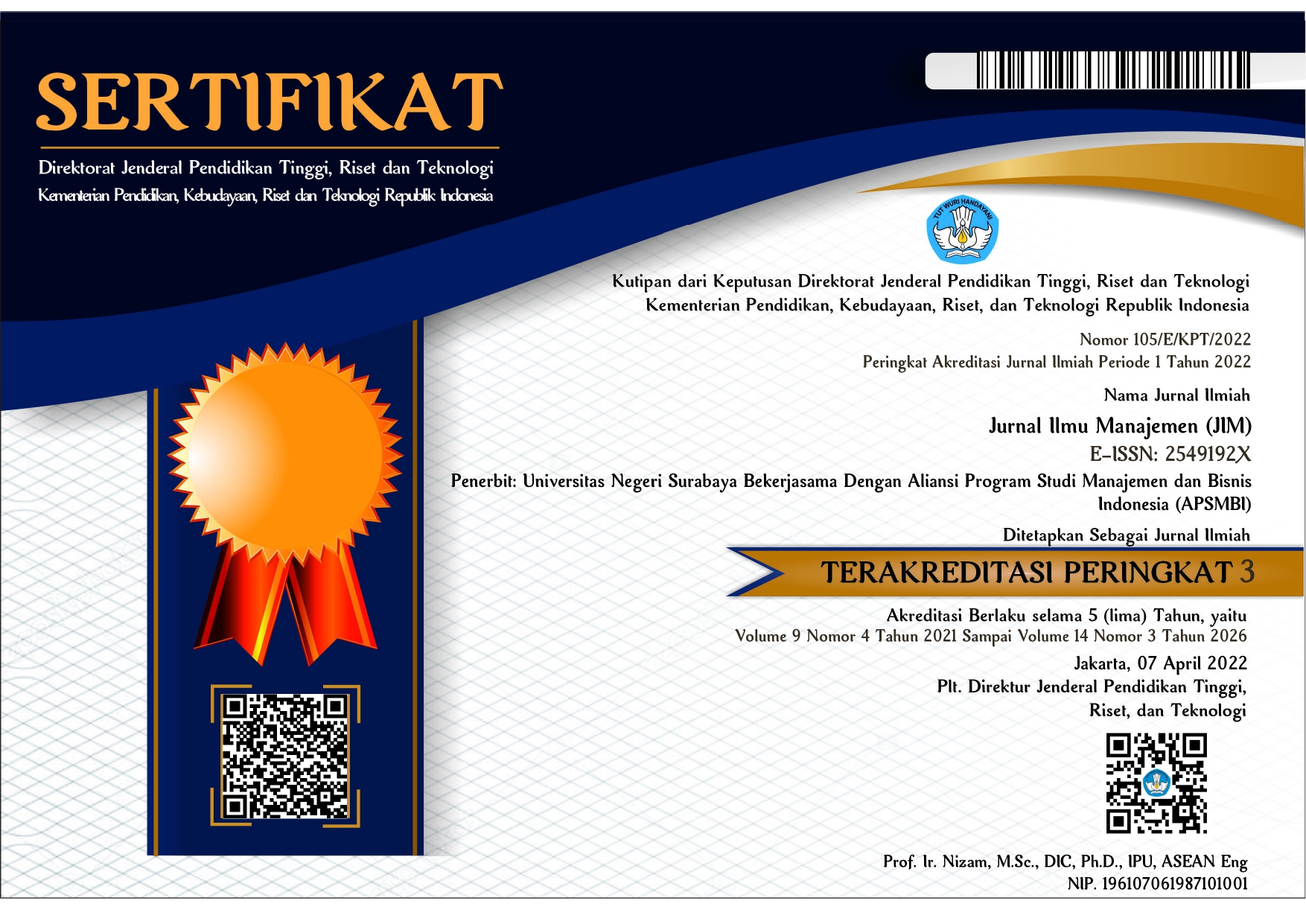Peran entrepreneur leadership terhadap innovation performance yang dimediasi oleh innovation process
DOI:
https://doi.org/10.26740/jim.v11n2.p495-505Keywords:
Entrepreneur Leadership, Innovation Performance, Innovation Process, Start-UpAbstract
This research is to identify the role of entrepreneurial leadership on innovation performance mediated by the study of the innovation process in start-up companies. The research design is a survey research using a questionnaire as a research instrument. This research was conducted to examine the effect of entrepreneurial leadership on innovation performance mediated by the innovation process, especially in start-up companies located in the East Java region with a total of approximately 119 companies with approximately 20 employees in each company. This study uses a quantitative approach with data collection methods using questionnaires which will be distributed online and processed using Partial Least Square (PLS). The results of the study show that Entrepreneur Leadership has a significant effect on Innovation Performance, and there is also a significant influence on the innovation process. This study also shows that the Innovation Process is a mediating variable between Entrepreneurial Leadership and Innovation Performance. The conclusion from this study is that Entrepreneur Leadership, Innovation process, and innovation performance have a relationship between the variables based on this study.
References
De Meyer, A., & Garg, S. (2005). Inspire to Innovate: Management & Innovation in Asia. New York: Palgrave Macmillan Ltd.
Drucker, P. F. (1985). The Practice of Innovation, Innovation and Entrepreneurship Practice and Principles. New York: Harper & Row.
Fontana, A. (n.d.). Innovate We Can! Manajemen Inovasi dan Penciptaan Nilai (Rev). Jakarta: Gramedia Widiasarana Indonesia.
Machfoedz, M., & Mahmud, M. (2004). Kewirausahaan Suatu Pendekatan Kontemporer. Yogyakarta: UPP AMP YKPN.
Musa, S., & Fontana, A. (2014). Measuring entrepreneurial leadership in innovation management [Conceptual framework]. The ISPIM Asia-Pacific Innovation Forum 2014.
Van Oorschot, J., Hofman, E., & Halman, J. (2018). A bibliometric review of the innovation adoption literature. Technological Forecasting and Social Change, 134. https://doi.org/10.1016/j.techfore.2018.04.032
Zaltman, G., Duncan, R., and Holbek, J. (1973). Innovations and organizations. New York:
John Wiley
Downloads
Published
How to Cite
Issue
Section
License

This work is licensed under a Creative Commons Attribution-NonCommercial 4.0 International License.
 Abstract views: 1077
,
Abstract views: 1077
, PDF Downloads: 657
PDF Downloads: 657










